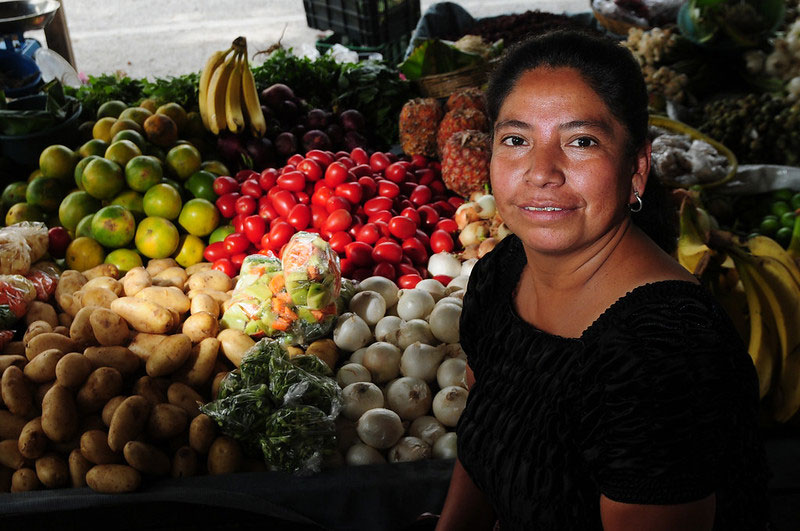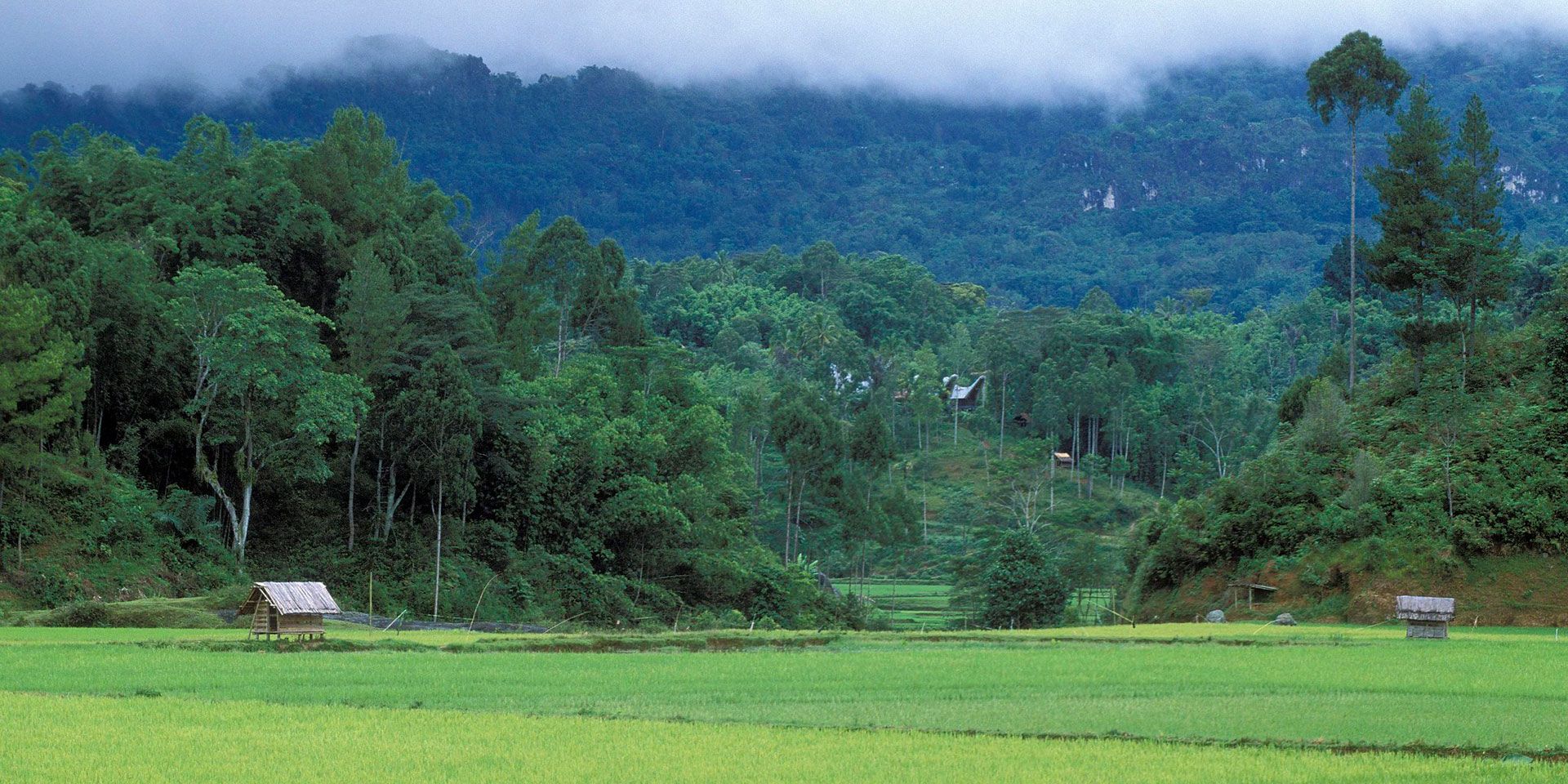Climate Expert Q&A
Series
By Nadya Nikiforova
Recent research by the World Economic Forum indicates that half of global GDP relies on nature for critical inputs. Yet natural capital, the key resource fueling the global economy, is being degraded and facing the risk of eventual depletion, with almost 70% of the world’s biodiversity lost in the last 50 years, and a million species facing the threat of extinction.
Ironically, the sectors that depend on nature the most – such as agriculture, infrastructure or extractive industries – also exert some of the heaviest impacts on biodiversity. This means that without switching to more sustainable methods of production which protect nature, entire industries, jobs and national economies could be at risk. This stark reality lies behind the current growth of biodiversity finance, which helps channel capital toward more sustainable use of nature. For more insights on the topic and to mark the International Day of Forests, we sat down with Irina Likhachova, IFC’s Biodiversity Finance Lead.

Irina Likhachova, Biodiversity Finance Lead, IFC. Photo: Courtesy of Irina Likhachova
What is biodiversity finance?
Biodiversity – all plant and animal life on earth from microorganisms to iconic species -- underpins healthy ecosystems that provide us services such as food, freshwater, timber, and climate regulation. To ensure continued economic prosperity for all people, we must protect, repair, and properly value biodiversity and ecosystem services that are being damaged by our economic activity. Biodiversity finance supports the transition to new production and consumption patterns that allow nature to heal and regenerate.
What role can private investors play in biodiversity finance?
This year’s Global Risk Report by the World Economic Forum ranked nature 4th among the top ten long-term business risks. Private companies and investors realize that their businesses depend on nature and healthy ecosystems, and that the current biodiversity loss crisis translates into financial, reputational, transition and business risks. Furthermore, the interaction between climate change and biodiversity loss can create a vicious cycle of escalating effects and both crises must be tackled together.
On the flip side, companies are beginning to see the benefits of investing in biodiversity. Research shows that switching to more sustainable ways of doing business in three major sectors of land use, built environment and extractives can generate 395 million jobs and $10.1 trillion in annual business opportunities by 2030.
For example, adopting agroforestry practices such as reforesting coffee plantations with native tree species provides shade for coffee crops, resulting in better quality coffee sold for a higher price. It also improves the quality of soil, which translates to less need for fertilizer. This is how shifting to nature-smart production practices can help improve quality, boost farmers’ income, and protect biodiversity. Financing transactions like these is good business for investors.

Fishing boats in Mexico. Photo: Curt Carnemark / World Bank
How would you describe the market for biodiversity finance today?
It’s growing very fast, in large part, building on the key lessons and market infrastructure developed to address climate change. We have seen rapid growth across three major areas needed to build a sustainable market for biodiversity finance:
- Political will: The crisis of biodiversity loss climbed to the top of global political agenda, having become a regular theme of discussions at G7, G20, and climate COPs. Last December nearly 200 countries have adopted the Global
Biodiversity Framework, which sets global targets to halt and reverse biodiversity loss by 2030. This framework, dubbed as “Paris Agreement for nature”, sets up a global architecture to transition to sustainable and nature-smart economies. One of the key targets set forth by the framework is to scale biodiversity finance, requiring countries to develop biodiversity finance action plans. This can jump start the growth of domestic biodiversity finance markets.
- Transparent rules: In parallel, to help shape the biodiversity finance market, standard setters like the Carbon Disclosure Project, , International
Sustainability Standards Board and the Network for Greening the Financial System are working to create approaches and a set of standards.
- Private sector participation: Over 125 financial institutions and investors with nearly 19 trillion euros in assets under management have signed the Finance for Biodiversity Pledge, which aims to reverse nature loss by 2030. Financial institutions and corporates are driving the Taskforce for Nature-related Financial Disclosures (TNFD) to develop a risk management and disclosure framework for companies and financial institutions to report and act on nature-related risks and opportunities. Finally, in a sign of a fast-growing biodiversity finance market, last year assets in biodiversity related funds tripped in one year to reach $1 bn.
I see clear signs that, building on the progress made to date in addressing climate change, the market for biodiversity finance will grow much faster. The ultimate goal is to stop financing economic activities that hurt nature and start moving capital toward activities that allow nature to regenerate so that we can use it sustainably.

A Woman attends her produce post in a market in Guatemala. Photo: Maria Fleischmann.
What’s the difference between biodiversity finance and
conservation?
While conservation – like protecting endangered species or setting up protected areas– is very important, biodiversity finance goes broader to address the key drivers of biodiversity loss: land and sea use change, climate change, pollution, overexploitation of resources, and spread of invasive species. These key drivers of biodiversity loss stem from economic activity and, thus, the solutions must focus on economic activity. This is very much in line with the Global Biodiversity Framework which sets targets for conserving 30% of land and oceans by 2030 AND aims to transform the way we produce and consume. One example of addressing chemical pollution and restoring pollination through biodiversity finance would be helping farmers switch to organic pest control practices.
Does biodiversity finance require new financial instruments?
While there is definitely growing interest in financial innovation like debt for nature swaps, conservation focused bonds like the World Bank’s Rhino Bond or biodiversity credits, much of this market can grow through conventional instruments for project finance. For example, last year, IFC provided a $150 million loan to SABESP, a water utility company in Brazil, to connect low income neighborhoods along the Pinheiros River in São Paulo to a central sewage collection and treatment system. This project addresses pollution, a key driver of biodiversity loss, and will result in biodiversity co-benefits in the river ecosystem and improve sanitation services for citizens.
What else is IFC doing in this space?
From our experience with green finance, we know that a set of clear, transparent guidelines is key to mobilizing investors. And a major gap was the absence of clear guidance on project eligibility criteria for biodiversity finance within the Green Bond and Green Loan Principles. Last year, we published the first-ever Biodiversity Finance Reference Guide to provide an indicative list of investment activities and project components that help protect, maintain or enhance biodiversity and promote sustainable management of natural resources. The guide focuses on three major investment categories:
- Investments activities that generate biodiversity co-benefits through addressing key drivers of biodiversity loss, such as regenerative agriculture practices, sustainable forestry management or improved wastewater treatment;
- Investments focused on conservation and restoration of nature as the primary objective, such as IFC Forest Bond;
- Investment activities that integrate nature-based solutions into large infrastructure projects to provide core services, such as water purification or coast stabilization, and to displace or complement traditional gray infrastructure.
The Global Biodiversity Framework estimates the biodiversity finance gap as $700 billion a year between now and 2030. To close the gap, the framework calls for repurposing of $500 billion per year in harmful subsidies. The remaining $200 billion a year will have to be mobilized from all sources – public, private, domestic, and international; and private sector will have to play a substantial role. Our goal with the Biodiversity Finance Refence Guide is to help investors, financiers, companies, and governments identify investments that protect and rehabilitate biodiversity and ecosystems and close the biodiversity finance gap.
Published in March 2023
